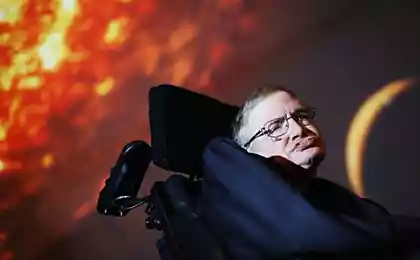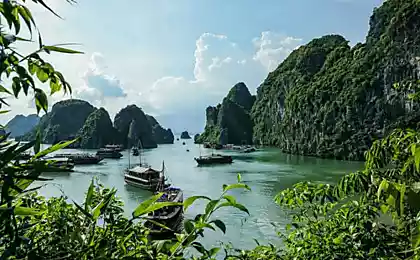764
Magic microcosm: 20 fascinating facts about the incredibly small objects
We invite you to journey into the microcosm - the world of small objects. So small that among all those that we consider to be the largest grain. < 1. , but we start from a very different side. Before you go on a journey to the depths of matter, let us turn our gaze upwards. For example, it is known that the moon an average of almost 400 thousand kilometers from the Sun - 150 million, to Pluto (which is not visible without a telescope) - 6 billion, to the nearest star Proxima Centauri - 40 trillion, to the nearest large galaxy Andromeda - 25 quintillion, and finally to the outskirts of the observable universe - 130 seconds * tillionov. Impressive certainly, but the difference between all these "quadric", "kvinti-" and "s * types" does not seem so huge, although they differ in a thousand times. It is quite another microcosm. Unless it can be hidden so many interesting, because it is simply nowhere to fit there. So tell us, and common sense is wrong.

2. If on one end of the logarithmic scale to postpone the smallest known distance in the universe, and on the other - the biggest, in the middle would be ... a grain of sand. Its diameter - 0.1 mm.

3. If you put in a series of 400 billion grains of sand, their number obognёt the globe at the equator. But if you collect the same $ 400 billion in the bag, it will weigh about a ton.

4. The thickness of a human hair - 50-70 microns, ie their 15-20 units per millimeter. In order to put them away to the Moon, will need 8 trillion hair (if they are not put on the length and the width of the course). Because the mind of a man of about 100 thousand, if collect hair from the entire population of Russia, to the moon is more than enough and even left.

5. size of bacteria - from 0.5 to 5 microns. If you increase the average bacterium to such a size that it is convenient to lay down our hand (100 thousand), the thickness of the hair will be 5 meters.

6. By the way, inside the human body resides a quadrillion bacteria, and their total weight is 2 kilograms. They are, in fact, even more than the cells of the body. So it is quite possible to say that a man - it's just such an organism consisting of bacteria and viruses with small patches of something else.

7. The sizes vary even more viruses than bacteria - almost 100 thousand times. If that were the case with the people, they would be an increase from 1 cm to 1 kilometer, and their social interaction would be a curious spectacle.

8. The average length of the most common types of viruses - 100 nanometers, or 10 ^ (- 7) of degree m. If we approach the operation again so that the virus has become the size of a hand, the length of the bacteria will be 1 meter, and the thickness of the hair - 50 meters.
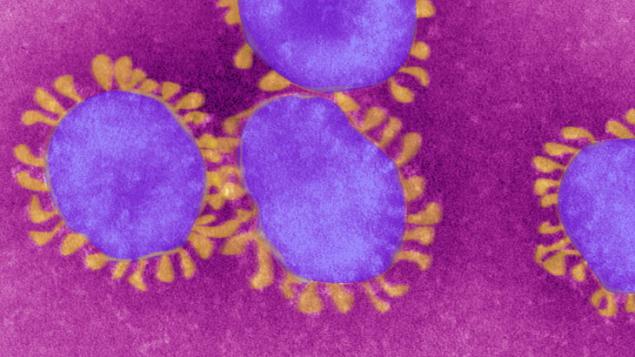
9. The wavelength of visible light - 400-750 nanometers, and see objects smaller than this value is impossible. Try to highlight Taco object wave simply will round it and not be affected.

10. sometimes wonder what it looks like an atom, or what color it. In fact, it did not seem atom. Just not at all. And not because we are good enough microscopes, but because the size of the atom smaller than the distance for which there is the concept of "visibility» ...

11. along the circumference of the globe can be tightly accommodate 400 trillion viruses. A lot of. This distance in kilometers light travels in 40 years. But if you put them all together, they can easily fit on a finger tip.

12. The approximate size of a water molecule - 3 10 ^ (- 10) meters. In a glass of water 10 such molecules septillionov - roughly millimeters away to the Andromeda Galaxy. A cubic centimeter of air molecules 30 quintillion (mostly nitrogen and oxygen).
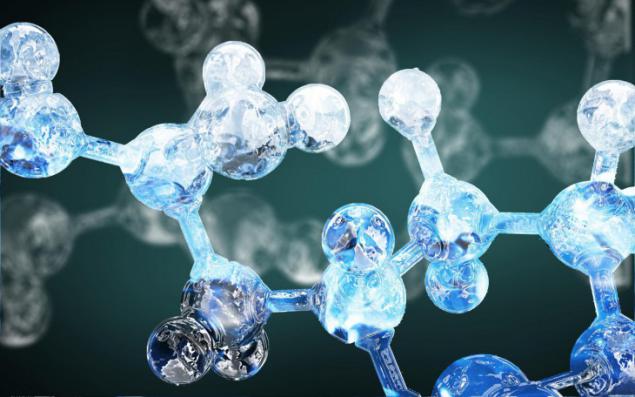
13. The diameter of the carbon (the basis of all life on Earth) - 3.5 10 ^ (- 10) meters, that is even slightly larger than a water molecule. The hydrogen atom is 10 times less - 3 10 ^ (- 11) m. This, of course, is not enough. But how much is not enough? Striking any imagination fact is that the minute, barely visible grain of salt is from 1 quintillion atoms.
Let's go to our standard size and approximate hydrogen so that it is convenient to lay in his hand. Viruses are then 300-meter size, bacteria 3-km, and the thickness of the hair will be equal to 150 kilometers, and even lying in state, it goes beyond the boundaries of the atmosphere (and the length can reach up to the moon).

14. The so-called "classic" diameter of the electron - femtometrov 5.5 or 5.5 to 10 ^ (- 15) meters. Dimensions of the proton and neutron, and even fewer are around 1.5 femtometrov. Proton about a meter as much as the ants on the planet Earth. We are using the already familiar to us the increase. Proton fits comfortably in the palm of us - and then the average size of the virus will be equal to 7000 kilometers (almost the whole Russia from west to east, by the way), and the thickness of the hair in 2 times exceed the size of the sun.

15. About the size of hard to say anything definite. It is assumed that they are somewhere in the range of 10 ^ (- 19) - 10 ^ (- 18) m. Smallest - top quark - "diameter" (let's remind you of the foregoing, we write the word in quotation marks), 10 ^ (- 22) meters.

16. There is such a thing as neutrinos. Look at your hand. Through it flies every second trillion neutrinos emitted by the sun. And you can not hide the hand behind his back. Neutrinos easily pass through and your body, and through the wall and through the entire planet, and even through the thick layer of lead in 1 light year. "Diameter" neutrinos is 10 ^ (- 24) meters - this particle is 100 times smaller than the top quark, or a billion times smaller than a proton, or 10 times smaller than Tyrannosaurus rex septillionov. Almost as many times smaller than Tyrannosaurus itself across the observable universe. If neutrinos increase so that it was about the size of an orange, even proton would be 10 times larger than the earth.

17. Now, I sincerely hope that you must hit one of the following two things. First - we can go further (and even make some sensible assumption that there will be). Second - but go deep into the matter infinitely still can not, and soon we utknemsya a standstill. This is only for achieving these "dead-end" size we have to go down another 11 orders of magnitude, counting from the neutrino. That is, the smaller the size of neutrinos 100 billion times. In the same number of times smaller than a grain of sand across the planet, by the way.

18. So, the size of 10 ^ (- 35) meters is waiting for us such a wonderful thing as the Planck length, - minimum distance of the possible in the real world (as far as it is considered in modern science).

19. More live here quantum strings - the objects are quite remarkable from every point of view (for example, they are one-dimensional - they have no thickness), but for our topic, it is important that their length is also in the range of 10 ^ (-35) m. Let's do our standard "magnifying" the experiment for the last time. Quantum string becomes a convenient size, and we hold it in your hand like a pencil. This neutrino is 7 times larger than the Sun, and the hydrogen atom in 300 times greater than the size of the Milky Way.
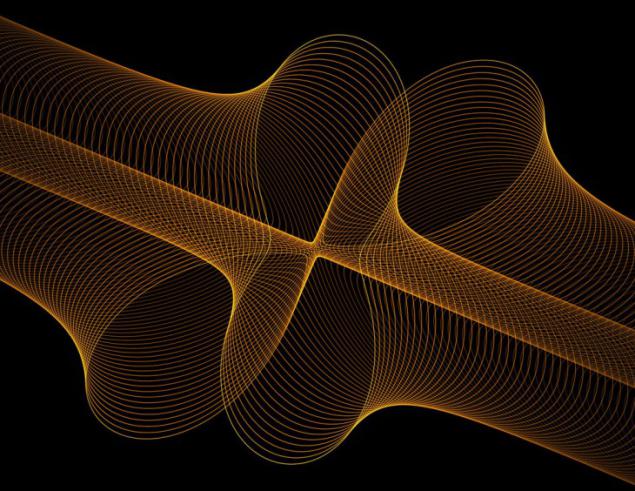
20. Finally we come to the very structure of the universe - the scale on which the space becomes like a time space of time, place and various other fancy stuff. Then there was nothing there (probably) ...
via geektimes.ru/post/258970/

2. If on one end of the logarithmic scale to postpone the smallest known distance in the universe, and on the other - the biggest, in the middle would be ... a grain of sand. Its diameter - 0.1 mm.

3. If you put in a series of 400 billion grains of sand, their number obognёt the globe at the equator. But if you collect the same $ 400 billion in the bag, it will weigh about a ton.

4. The thickness of a human hair - 50-70 microns, ie their 15-20 units per millimeter. In order to put them away to the Moon, will need 8 trillion hair (if they are not put on the length and the width of the course). Because the mind of a man of about 100 thousand, if collect hair from the entire population of Russia, to the moon is more than enough and even left.

5. size of bacteria - from 0.5 to 5 microns. If you increase the average bacterium to such a size that it is convenient to lay down our hand (100 thousand), the thickness of the hair will be 5 meters.

6. By the way, inside the human body resides a quadrillion bacteria, and their total weight is 2 kilograms. They are, in fact, even more than the cells of the body. So it is quite possible to say that a man - it's just such an organism consisting of bacteria and viruses with small patches of something else.

7. The sizes vary even more viruses than bacteria - almost 100 thousand times. If that were the case with the people, they would be an increase from 1 cm to 1 kilometer, and their social interaction would be a curious spectacle.

8. The average length of the most common types of viruses - 100 nanometers, or 10 ^ (- 7) of degree m. If we approach the operation again so that the virus has become the size of a hand, the length of the bacteria will be 1 meter, and the thickness of the hair - 50 meters.

9. The wavelength of visible light - 400-750 nanometers, and see objects smaller than this value is impossible. Try to highlight Taco object wave simply will round it and not be affected.

10. sometimes wonder what it looks like an atom, or what color it. In fact, it did not seem atom. Just not at all. And not because we are good enough microscopes, but because the size of the atom smaller than the distance for which there is the concept of "visibility» ...

11. along the circumference of the globe can be tightly accommodate 400 trillion viruses. A lot of. This distance in kilometers light travels in 40 years. But if you put them all together, they can easily fit on a finger tip.

12. The approximate size of a water molecule - 3 10 ^ (- 10) meters. In a glass of water 10 such molecules septillionov - roughly millimeters away to the Andromeda Galaxy. A cubic centimeter of air molecules 30 quintillion (mostly nitrogen and oxygen).

13. The diameter of the carbon (the basis of all life on Earth) - 3.5 10 ^ (- 10) meters, that is even slightly larger than a water molecule. The hydrogen atom is 10 times less - 3 10 ^ (- 11) m. This, of course, is not enough. But how much is not enough? Striking any imagination fact is that the minute, barely visible grain of salt is from 1 quintillion atoms.
Let's go to our standard size and approximate hydrogen so that it is convenient to lay in his hand. Viruses are then 300-meter size, bacteria 3-km, and the thickness of the hair will be equal to 150 kilometers, and even lying in state, it goes beyond the boundaries of the atmosphere (and the length can reach up to the moon).

14. The so-called "classic" diameter of the electron - femtometrov 5.5 or 5.5 to 10 ^ (- 15) meters. Dimensions of the proton and neutron, and even fewer are around 1.5 femtometrov. Proton about a meter as much as the ants on the planet Earth. We are using the already familiar to us the increase. Proton fits comfortably in the palm of us - and then the average size of the virus will be equal to 7000 kilometers (almost the whole Russia from west to east, by the way), and the thickness of the hair in 2 times exceed the size of the sun.

15. About the size of hard to say anything definite. It is assumed that they are somewhere in the range of 10 ^ (- 19) - 10 ^ (- 18) m. Smallest - top quark - "diameter" (let's remind you of the foregoing, we write the word in quotation marks), 10 ^ (- 22) meters.

16. There is such a thing as neutrinos. Look at your hand. Through it flies every second trillion neutrinos emitted by the sun. And you can not hide the hand behind his back. Neutrinos easily pass through and your body, and through the wall and through the entire planet, and even through the thick layer of lead in 1 light year. "Diameter" neutrinos is 10 ^ (- 24) meters - this particle is 100 times smaller than the top quark, or a billion times smaller than a proton, or 10 times smaller than Tyrannosaurus rex septillionov. Almost as many times smaller than Tyrannosaurus itself across the observable universe. If neutrinos increase so that it was about the size of an orange, even proton would be 10 times larger than the earth.

17. Now, I sincerely hope that you must hit one of the following two things. First - we can go further (and even make some sensible assumption that there will be). Second - but go deep into the matter infinitely still can not, and soon we utknemsya a standstill. This is only for achieving these "dead-end" size we have to go down another 11 orders of magnitude, counting from the neutrino. That is, the smaller the size of neutrinos 100 billion times. In the same number of times smaller than a grain of sand across the planet, by the way.

18. So, the size of 10 ^ (- 35) meters is waiting for us such a wonderful thing as the Planck length, - minimum distance of the possible in the real world (as far as it is considered in modern science).

19. More live here quantum strings - the objects are quite remarkable from every point of view (for example, they are one-dimensional - they have no thickness), but for our topic, it is important that their length is also in the range of 10 ^ (-35) m. Let's do our standard "magnifying" the experiment for the last time. Quantum string becomes a convenient size, and we hold it in your hand like a pencil. This neutrino is 7 times larger than the Sun, and the hydrogen atom in 300 times greater than the size of the Milky Way.

20. Finally we come to the very structure of the universe - the scale on which the space becomes like a time space of time, place and various other fancy stuff. Then there was nothing there (probably) ...
via geektimes.ru/post/258970/
"Coach filed": 12 interesting facts about Uber, who hates all taxi drivers in the world
Fact of the day: This cat has managed to leave marks on the 2,000-year old Roman tiles

